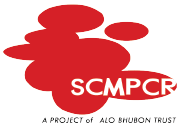Cancer claims the lives of millions across the world, and it is no different in Bangladesh, where a large number of people die every year from the deadly disease. According to the International Agency for Research on Cancer’s report last year, about 1.08 lakh people die, while 1.5 lakh people develop cancer every year in Bangladesh.
National Institute of Cancer Research&Hospital (NICRH), the only specialized hospital for cancer treatment in the country. A place for patients in the low-income bracket. But with 300-bed, it is nowhere near enough because the number of patients seeking treatment there is on the rise. According to the annual health bulletin of the Directorate General of Health Services-2017, the NICRH provided treatment to 1,91,000 outdoor, 4,813 emergencies, and 8,365 indoor cancer patients in 2016[1].
Bangladesh is home to 24.1 million extremely poor people (out of more than 160 million) who earn less than US$1.90 a day, the international poverty threshold[2]. Private hospitals also have been offering treatment in recent times through their oncology units. These are also too expensive for most patients, poor patients hardly seek treatment.
The existing cancer treatment facilities in Bangladesh are centralized to Dhaka. Every day around 550 patients takes radiotherapy while around 275 patients take chemotherapy from the hospital at minimum cost. But radiotherapy and other cancer treatment is not a single day’s treatment; it takes at least six weeks or more to complete the course. It means that a patient needs to come to the capital or stay in the city, adding a further burden.
Even with the government hospitals providing medicines free of cost to at least 50 percent of the patients, families of many cancer patients are still unable to bear expenses of accommodation in capital and stop treatment halfway.
Under these circumstances, SCMPCR aims to build a welfare home for poor cancer patients providing the cheapest accommodation and palliative care for poor cancer patients during the treatment period. Since, Palliation includes Nursing care, Pain relief, and Counseling and Spiritual development of the patient.
Excerpts from the WHO states: “Palliative care is an urgent humanitarian need worldwide for people with cancer and other chronic fatal diseases. Palliative care is particularly needed in places where a high proportion of patients present in advanced stages and there is little chance of cure. A patient with an advanced stage of cancer and when a cure is no longer possible with active treatment, he/she is referred to as Terminally Ill. These patients usually do not survive more than 3 to 6 months and they are badly affected both physically and mentally with the fear of death. These patients should be ideally kept in a Hospice and cared for. Relieving their symptoms and frustration is referred to as Palliative Care[3].
To help the poor cancer patients and reduce treatment discrimination and make the right decision about every step of cancer a welfare home is now a must needed thing.
Currently, SCMPCR is looking for funding to conduct a welfare home for the poor cancer patient and technical/collaboration with international organizations to conduct research and other related works to improve the cancer care scenario in Bangladesh.
We hope that any kind-hearted person or any organization will come forward to develop an effective solution for the poor cancer patient and make a contribution for such noble work.
References:
[1]. National Cancer Control Strategy and Plan of Action 2009-2015. Directorate General of Health Services. Ministry of Health and Family Welfare, Bangladesh. [Last accessed on 2013 May 02]. Available from: http://www.ban.searo.who.int/LinkFiles/Publication_Cancer_Strategy.pdf
[2]. Newsletter, UCA news.com, January 25, 2019https://www.ucanews.com/news/rich-poor-gap-increases-in-bangladesh/84334
[3]. Knowledge into ActionCancer ControlWHO Guide for Effective Programmes. Available from:https://www.who.int/cancer/media/FINAL-PalliativeCareModule.pdf
HOME Unused LAND




